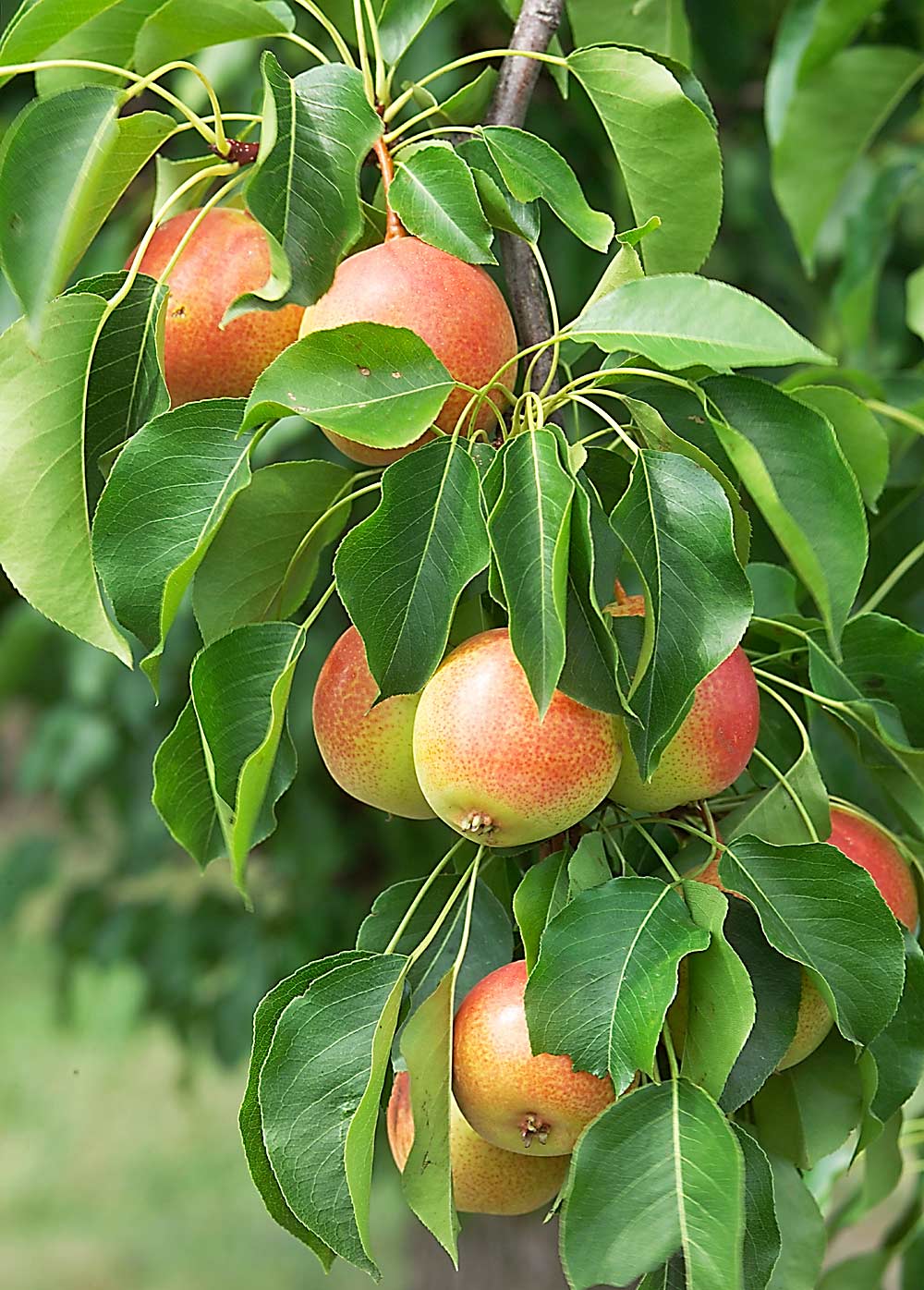
The University of Minnesota breeding program has a new release: an Asian pear cross that grows in colder climates.
“It goes back to crosses that we made in the late 1980s with the goal of developing an Asian pear that was hardy in Zone 4. That was the issue. We really don’t have any that are reliably hardy in our climate,” said UMN breeder David Bedford.
Called Juicy Jewel, the pear is a cross between the Asian pear Shinseiki and the cold-hardy pear Summercrisp. About 25 selections with that parentage have been under review.
“We’ve been watching and narrowing them down for 20-plus years. This one is hardy in Zone 4 and is the best performer, so it was time to release it and get it out to the grower,” Bedford said.
In addition to its hardiness in U.S. Department of Agriculture Plant Hardiness Zone 4, Juicy Jewel has a range of other desirable qualities. At the top of the list for Bedford is the eating experience. “Asian pears are not heavily flavored, but they’re sweet and crisp, and this one definitely falls into that category with a nice sugar content and that crisp, juicy character,” he said. “It’s almost that sensation of so much juice per square crunch that it’s very refreshing.”
Bedford listed several other key attributes of Juicy Jewel:
—Easy ripening determination. The cue for harvest is the point when the background color is transitioning from green to yellow. “The good news is it’s a visual criteria and doesn’t require a lot of equipment; you just calibrate your eye for that green going to yellow, and then it’s perfect,” Bedford said. “And you can sell it right away or store it.”
—Excellent shelf life. When picked at ripeness — not before or after — the pear will store 2–3 months with simple refrigeration and with no need for controlled atmosphere or 1-MCP (1-methylcyclopropene).
—Early ripening. In Minnesota, Juicy Jewel ripens at about mid-August. For other parts of the country, Bedford said a good harvest gauge would be about a month before Honeycrisp. “For direct markets, it falls into that gap perhaps between cherries and apricots and apples, so it’s going to have a nice little niche,” he said.
—Suitable for Zone 4 and above. “This pear should be at home in most areas where apples grow well,” Bedford said.
—Good disease resistance, at least in Minnesota. “We’re not a big pear-producing state, so I can’t say that we’ve got tons of inoculum and pear pests here, but in the 20-plus years we’ve been working with these trees, we’ve never had to spray for anything other than some minor passing problems. I hesitate to call Juicy Jewel organic, but for us, it has been organic by default,” he said. Even when fire blight has come through the area, he noted, the trees were completely unscathed. “I’m not guaranteeing that for the rest of the world, but Juicy Jewel certainly has not been a magnet for any of those problems for us.”
—Lots of pollinizer options. Although Bedford recommends Summercrisp as the pollinizer for Zone 4, a diversity of other varieties has been tried, and they all appear compatible.
John Jacobson at Pine Tree Apple Orchard in White Bear Lake, Minnesota, was one of the local test growers for Juicy Jewel. He is quite pleased with the new variety and said it has a “nice yellow color with a little red tinge, and really good flavor.” The trees grew well and were disease-resistant. As an apple grower, primarily, he isn’t sure whether he’ll add them to the orchard at this point. “It’s a nice pear, so it’s good to know they’re there if I do,” he said.
Juicy Jewel marks the 110th release from the UMN breeding program, and the fifth pear, Bedford said, but additional pears from the original crosses are also looking good. “We can envision the possibility of one or two additional varieties being released from this program in the future,” he said.
For now, however, growers can directly order Juicy Jewel trees through seven nurseries that are licensed to propagate and sell the new open-variety pear. More information about the pear and nursery availability is posted online at: mnhardy.umn.edu/juicy-jewel.
—by Leslie Mertz






Leave A Comment